Nice is the fifth-largest city in France, and one of the most sophisticated. It hugs the coastline, and its elegant hotels along the Promenade des Anglais have a perfect view of the ocean just across the street. From the coast, Nice stretches upward to Le Chateau, once topped by a beautiful castle but now crowned only in picturesque ruins.
The history of Nice
The city was founded by the Phocaeans of Marseille, Greek mariners, in around 350 BC, and was probably named for the Greek goddess Nike in honor of a victory over a neighboring colony.
The history still lingers in Vieux Nice, the oldest quarter, in the maze of narrow flagstone streets still used today. It was conquered by the Romans in the first century AD and became a busy trading port, and later fell to the Saracens. During the Middle Ages, it was held by the counts of Provence and later the counts of Savoy, and regained its might as a trading port.
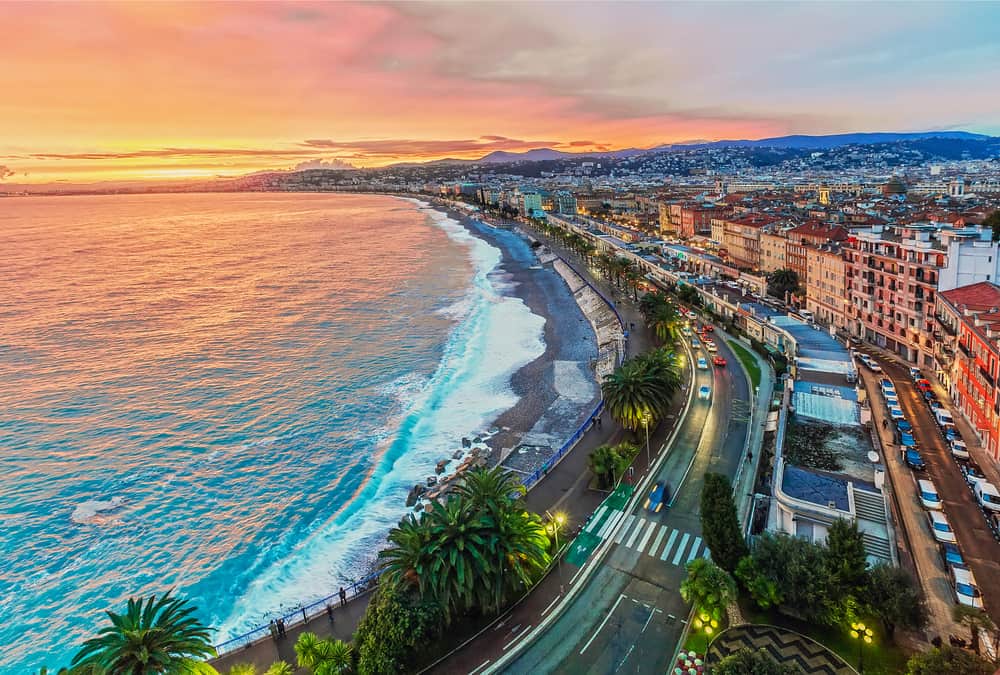
Vieux Nice – The old town
The old town, composed of Vieux Nice, the harbor, and the business district, is separated from the new town by the Paillon River.
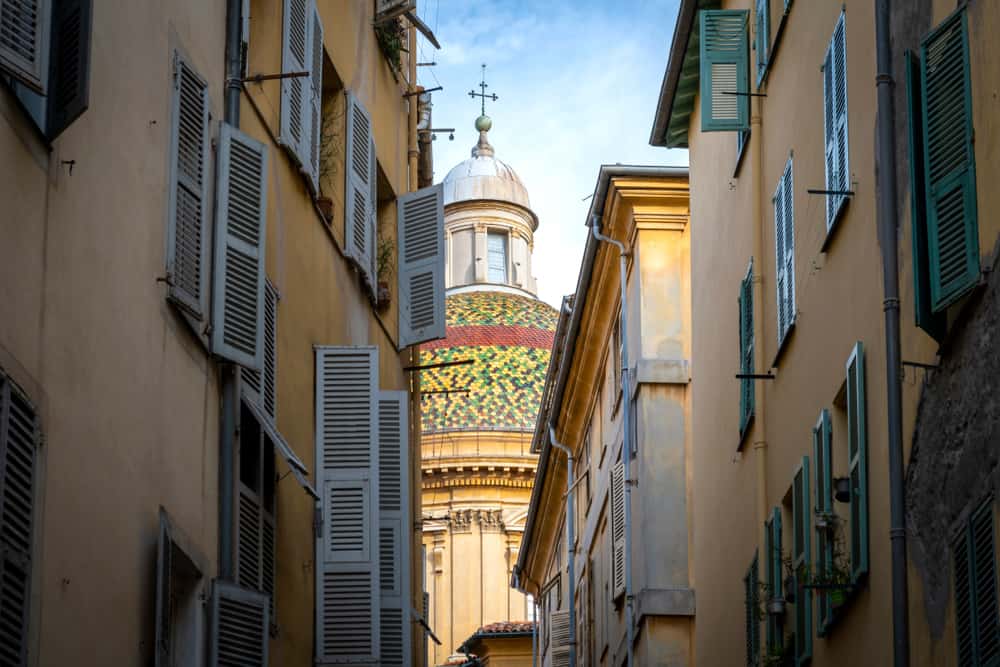
Le Chateau is on the old town side, along with the Musee Terre Amata and, above an ancient cemetery, Colline de Chateau, a medieval castle ruin. To the west of this castle, and sandwiched between it and Paillon River, are a variety of different attractions: the Chapelle de la Misericorde, Chapelle de l’Annonciation, Chapelle de St. Jacques-Jesu, and Cathedral Ste-Reparate, all picturesque and primarily baroque churches.
The Palais Lascari, home of a marshal of the duke of Savoy and today open to the public for a fee; and the Place Garibaldi, where you can walk around the fountain while choosing which picturesque café you’re going to eat at today.
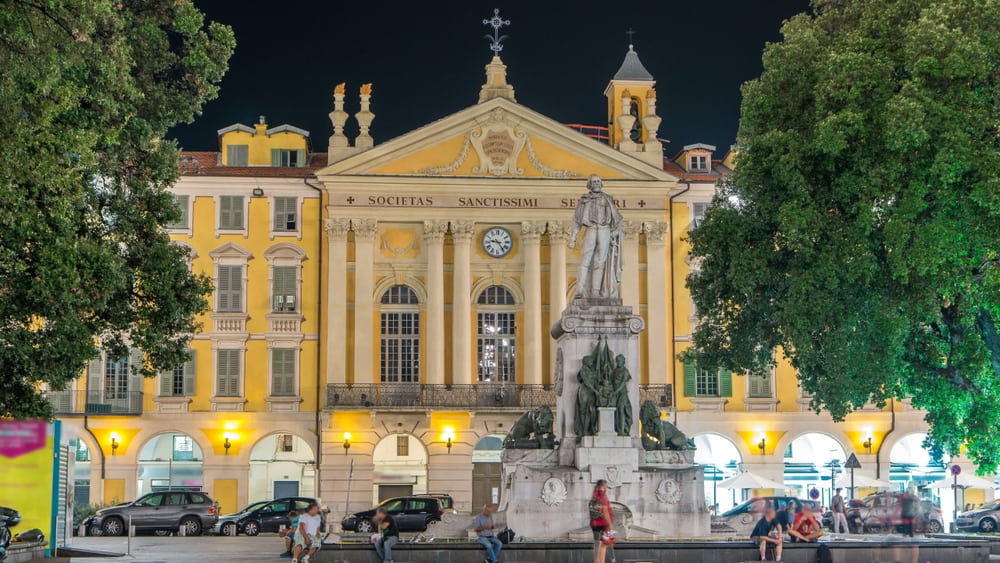
Promenade des Anglais
After you’ve exhausted walking around Vieux Nice during the day, you’re probably ready for some excitement during the evening. Nice is the leading resort city of the Cote d’Azur, and there are plenty of things to do at any time of the day.

Plan the time of year you come carefully, and you can enjoy some of their regular festivals, including the Carnival of Nice, their premier celebration. Or you can try the Casino Ruhl, a neon-lit modern counterpoint to the ancient streets of Vieux Nice, and later lounge in the Bar Anglais at the nearby Hotel Negresco.
In July, the Nice Jazz Festival draws international performers.
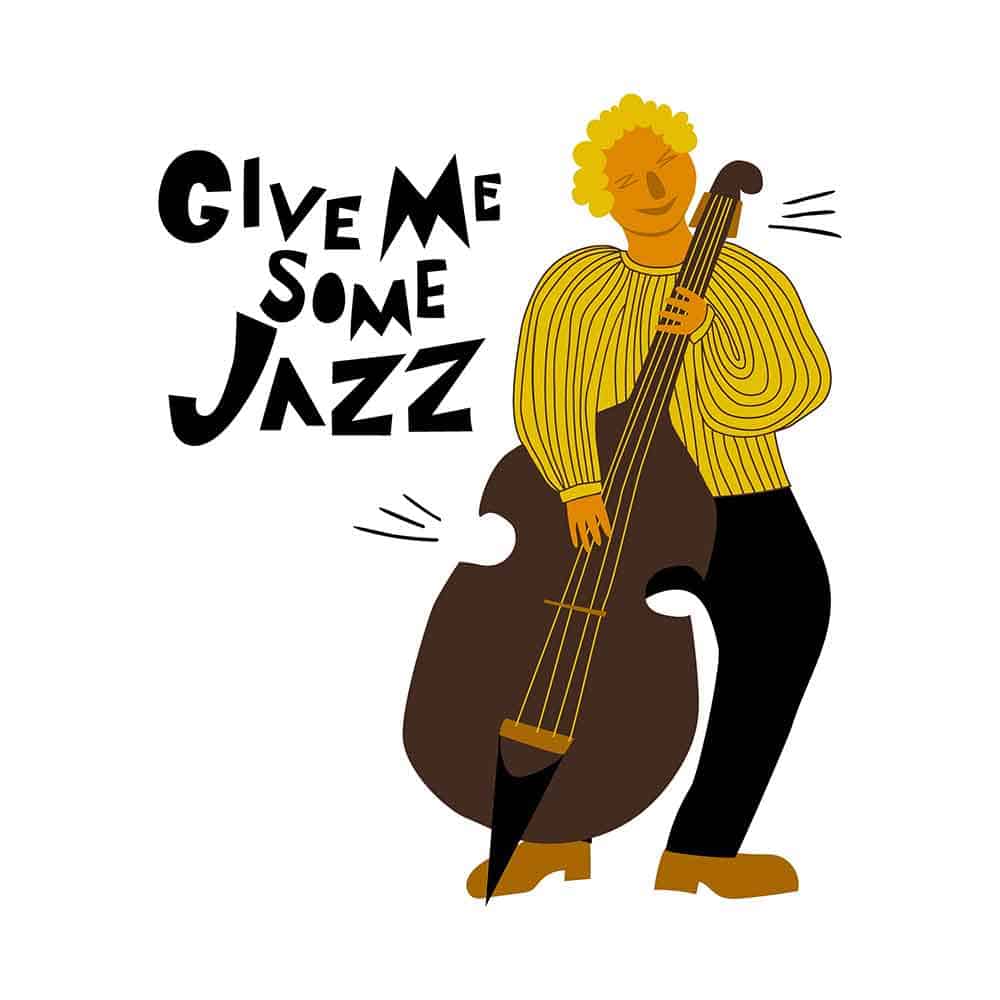
In the new part of town during the day, you’ll want to take at least one walk down the Promenade des Anglais, two wide carriageways separated by flowerbeds and palm trees, and stretching two and a half miles down the waterfront.
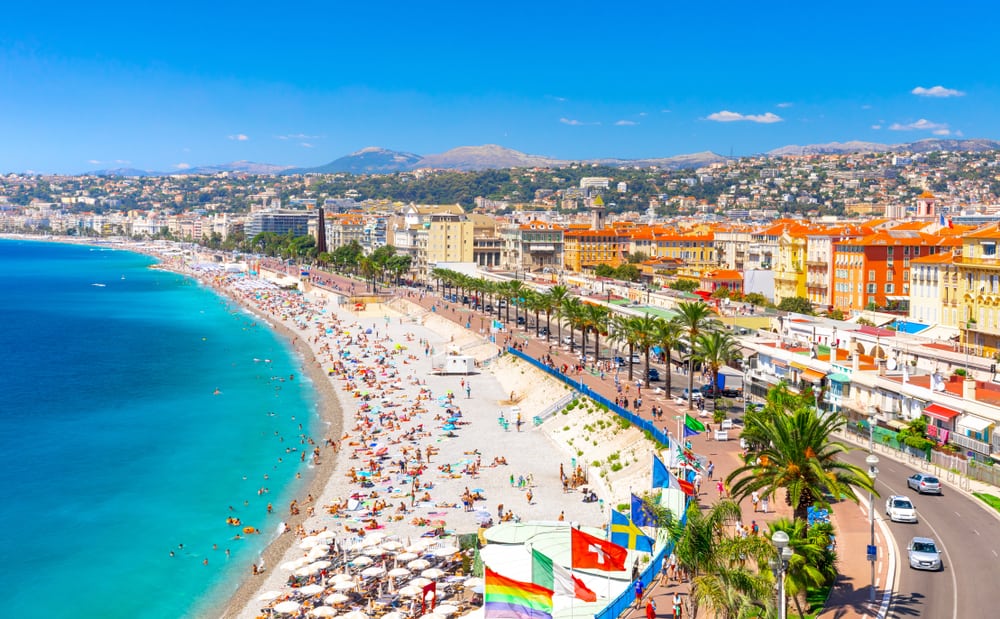
On one side of the promenade, you’ll find grand hotels both modern and quaint, and along most of the other side stretches the beaches of the Baie des Anges. The beaches alternate between public and private, and you can find waterskiing, windsurfing, parasailing, jet-skiing rentals in many places.
For less athletic pursuits, you’ll find two fine art museums, Musee des Beaux-Arts Jules-Cheret and the Museum of Art and History in the Palais Massena. The Jardin Albert I rises over the River Paillon, beautiful both during the day and in the evening.
Cimiez
In Cimiez, further away from shore, there are a bouquet of museums. The Musee Matisse, Musee du Message Biblique Marc-Chagall, and the Musee Archaeologique.
Matisse and Chagall are among the French impressionists who lived here for some time, and they left their marks on the culture of the area. You’ll also find the ruins of a Roman amphitheatre here.
Transportation in Nice
The airport at Nice is one of the most important in France, and as a hub of transportation on the Cote d’Azur, Nice is a great place to start from for driving tours. There is also a regular passenger service to Corsica.
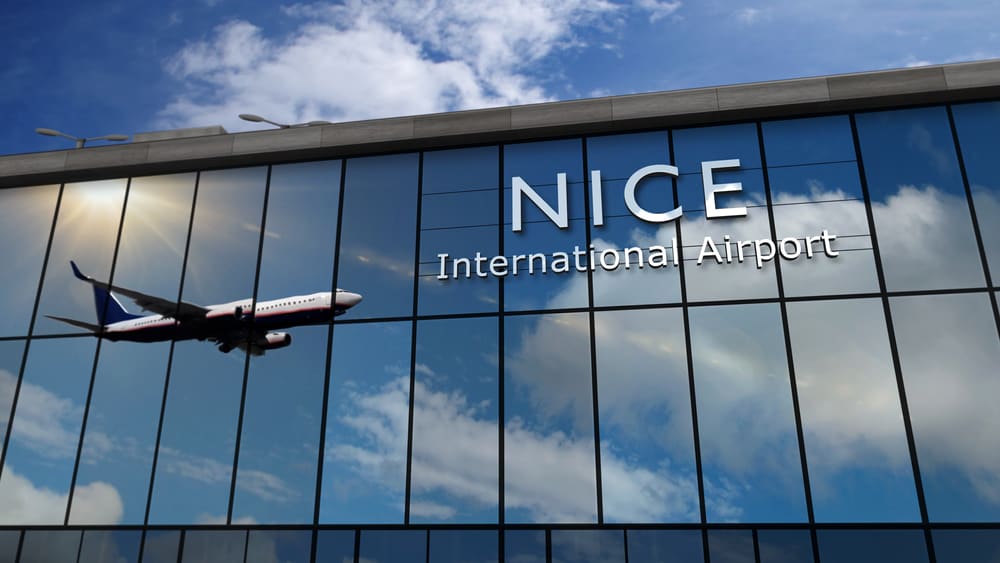
Shopping
Though Nice is primarily a resort city, you’ll also find a wide variety of luxury goods for sale here. Gallons of fresh virgin olive oil can be purchased at tiny market stalls for a bargain price, and some of the best French perfumes are manufactured here and north, and can be found here.
Crystallized fruit, a Nice specialty, is sold at Henri Auer, and there are a fresh flower market and lots of antiques as well.
Cuisine
Nice, like most of the Cote d’Azure, uses lots of garlic and olive oil. In fact, their version of mayonnaise is made of olive oil and seasoned with garlic. Ratatouia, or ratatouille, was first cooked in Nice before being exported to New Orleans as a staple.

For a true taste of the city, try pissaladiera, an onion flan with anchovies and black olives.
Other attractions in Nice
Nice is a growing cultural center. The Centre Universitaire Mediterraneen holds conferences on language studies and contemporary problems. A university for law, science and letters has been established there, and an international art school – appropriately – was established in 1970.
